Detailed introduction of University of Trier:
Introduction
The University of Trier is located in Trier, Rhineland-Palatinate, Germany. It is a public university with a profound history. Its history can be traced back to 1473. It was closed in 1798 and rebuilt in 1970.
Overview
Number of students and faculty: In 2006, there were about 13,751 students, of which 43.5% were male, 56.5% were female, and foreign students accounted for about 15.5%. There are currently more than 900 faculty members, including 153 professors.
Subject areas: The disciplines are rich, covering 6 professional fields, including education, philosophy, psychology, linguistics, literature, media studies, Egyptology, classical archaeology, art history, papyrus, history, politics, economics, sociology, mathematics, computer science, economic computer science, law, geography, earth science, etc.
History and establishment time
In 1455, Pope Nicholas V authorized Archbishop Jakobi von Sierck of Trier to establish a university, but Sierck did not implement the plan due to economic reasons. In 1472, the Trier City Government exchanged 2,000 gold marks for a license to establish a university, and founded the University of Trier on March 16, 1473.
In 1560, the university was taken over by the Jesuits, who rebuilt the theology and philosophy departments but neglected other majors.
In 1794, Trier was occupied by the French Revolutionary Army, and on April 6, 1798, the University of Trier was ordered to close by the French authorities.
In 1969, the government of the Rhineland-Palatinate State of Germany decided to establish the second university in the federal state in addition to the University of Mainz. In 1970, the "University of Trier-Kaiserslautern" was established. In 1975, the two schools became independent, and the University of Trier developed into a university with humanities as its feature.
School Strength
Teaching Strength: Focus on interdisciplinary teaching, so that ideas from different disciplines collide with each other, and provide students with a broad and solid academic foundation. For example, in some interdisciplinary courses and projects, students can comprehensively apply multidisciplinary knowledge to solve practical problems, which cultivates students' innovative thinking and comprehensive literacy.
Scientific research strength: In-depth scientific research has been carried out in multiple disciplines, especially in the fields of humanities and social sciences. The school's research projects are often closely integrated with the needs of local and regional social and economic development, providing important intellectual support for local cultural heritage and social policy formulation.
Faculty: It has a high-quality faculty, including many experts and scholars with profound attainments in their respective disciplines. They not only have fruitful results in academic research, but also have rich teaching experience and can provide students with high-quality teaching and guidance.
Institutional nature
Public university.
Educational philosophy
Emphasis on interdisciplinary research and teaching, focusing on cultivating students' comprehensive literacy and innovation ability, so that students can gain a broader development space in the cross-integration of different disciplines. At the same time, we attach importance to international education, actively establish cooperative relations with universities and institutions around the world, provide students with opportunities to participate in international exchanges and cooperation, and cultivate students' international vision and cross-cultural communication skills.
Key laboratories and disciplines
Key laboratories: There are no clear national or international key laboratories, but the school is equipped with advanced research equipment and laboratories in related disciplines, providing good conditions for teachers and students' scientific research.
Key disciplines: Linguistics, culture, law, economics, sociology, mathematics/informatics, geography and other disciplines are strong and have a certain influence in Germany and even internationally.
Department settings
The University of Trier has 6 departments:
FB I: Department of Education, Philosophy, and Psychology, with about 2,300 students.
FB II: Department of Linguistics, Literature, and Media, with about 2,700 students.
FB III: Department of Egyptology, Papyrus, History, Archaeology, Art History, and Political Science, with about 1,700 students.
FB IV: Faculty of Economics, Sociology, Mathematics, and Computer Science, with about 3,300 students.
FB V: Faculty of Law, with about 1,800 students.
FB VI: Faculty of Geography and Earth Sciences, with about 1,600 students.
In addition, there is a theology department under the jurisdiction of the Archbishop of Trier, with about 300 students. The theology department is independent of the University of Trier, but the two are closely connected.
Ranking
The University of Trier is at a medium level in the overall ranking in Germany and internationally, but it performs well in the professional rankings in some subject areas, such as some liberal arts majors have a high reputation and influence in Germany.
Cost
Tuition: As a public university in Germany, tuition is usually not charged, but a certain registration fee of about 150-300 euros is required each semester.
Living expenses: The living expenses in Trier are relatively moderate, and the monthly living expenses of students are about 700-1000 euros, including accommodation, food, transportation, books, etc.
Campus
Campus environment: Trier University has two beautiful park-style campuses. The campus where geography, earth-related disciplines and informatics are located is equipped with department libraries, student cafeterias and student dormitories. The other campus has a university library, central cafeteria, sports fields and gymnasiums. The campus environment is beautiful and provides students with a good learning and living environment.
Campus facilities: The school's teaching facilities and scientific research equipment are complete, such as the library's rich collection of books and advanced laboratory equipment, which can meet students' learning and scientific research needs. In addition, the school also provides students with a wealth of sports facilities and cultural activity venues to promote students' all-round development.
-
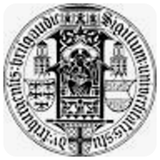
University of Freiburg
-
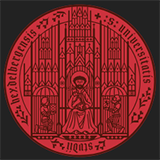
Heidelberg University
-
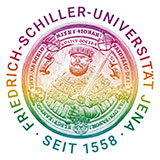
University of Jena
-
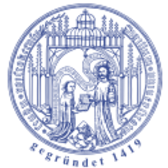
University of Rostock
-
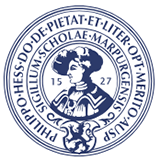
University of Marburg
-
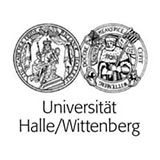
University of Halle-Wittenberg
-
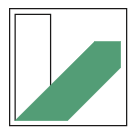
University of Bayreuth
-

Leipzig University
-
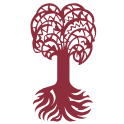
University of Tübingen
-
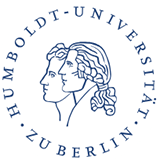
Humboldt University of Berlin
-

Mesoamerican University
-

Istmo University
-

Mariano Galvez University of Guatemala
-

Regional University of Guatemala
-

Galileo University
-

Francisco Marroquín University
-

Rafael Landívar University
-

University of the Valley of Guatemala
-

University of San Carlos of Guatemala
-

Technological Institute of Tlaxcala Plateau
-

Golfo University
-

Technological University of South Sonora
-

Technological University of Huejotzingo
-

Tizimín Institute of Technology
-

Chilpancingo Institute of Technology

